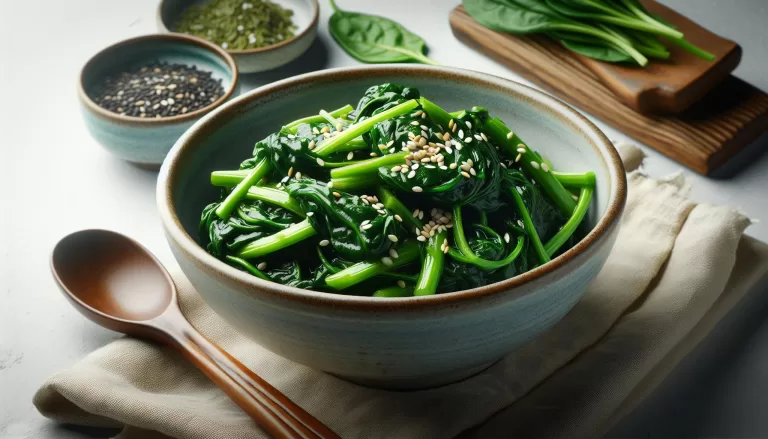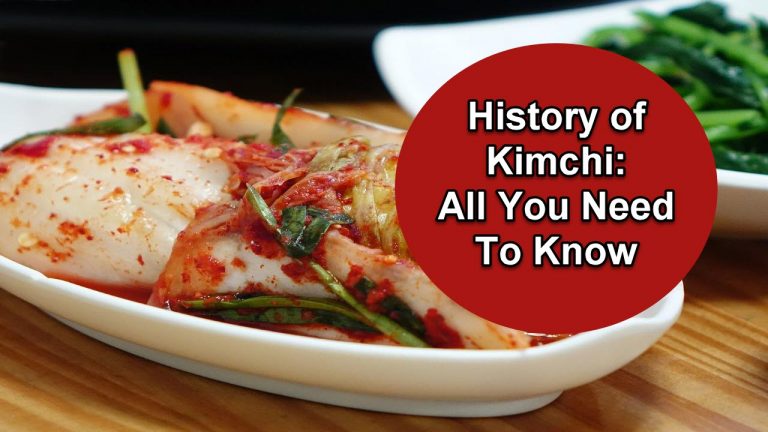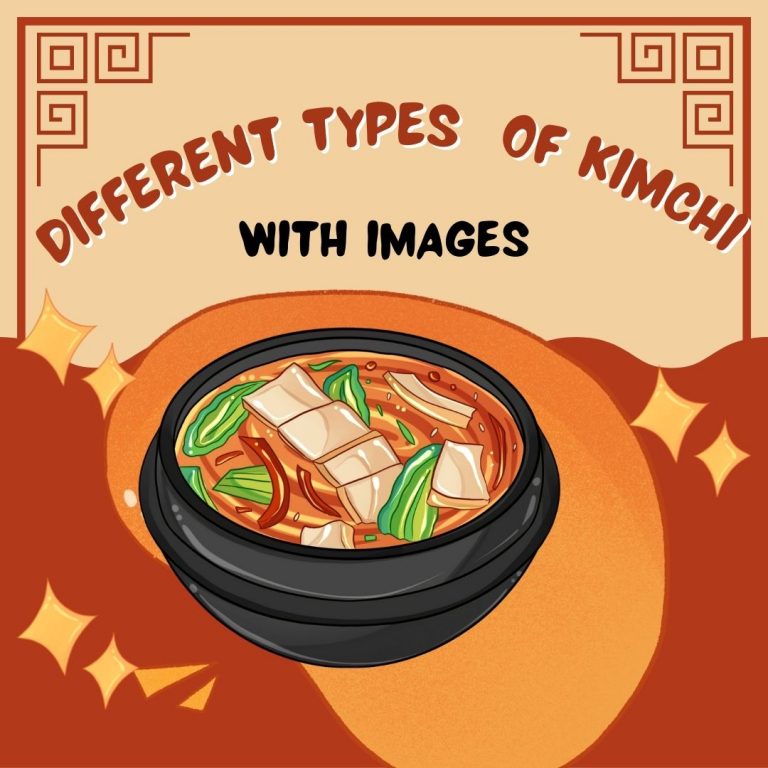Easy and Nutritious Homemade Kongnamul Muchim Seasoned Soybean Recipe

What is Kongnamul Muchim?
Journeying into the heart of Korean cuisine, you’ll quickly stumble upon a favorite: Kongnamul muchim. Bridging simplicity and flavor in every bite, this seasoned soybean sprout dish stands as a cornerstone of Korean meals.
Picture this: crisp, juicy soybean sprouts, coated in a fragrant blend of soy sauce, garlic, and sesame oil. A sprinkling of scallions, a dash of chili flakes for that signature heat, and your refreshing, seasoned side dish—Kongnamul muchim—is good to go.
Rooted in frugality, this humble dish emerged from using readily available ingredients. Yet, it soon carved its niche in Korean kitchens, benefitting from, and adding to, the culture’s rich culinary palette.
Although considered a side dish—or “banchan”—Kongnamul muchim is a star in its own right. It’s an essential player in bibimbap, the Korean mixed rice bowl, and stars in hot pots and stews, too.
Aside from taste, nutrition is where Kongnamul muchim really shines; it’s high in protein, low in calories, and packed with vitamins. Packed with fiber, this sprout superstar helps the digestive system, boosts heart health, and maintains cholesterol levels. Bravo, Kongnamul.
Ever thought about DIYing Kongnamul muchim at home? Don’t fret—it’s indeed doable, even for beginners. Stay tuned as we spill the beans on how to whip up a taste of Korea in your own kitchen.
Ingredients for Homemade Kongnamul Muchim

Ready to embark on this culinary journey, right in your kitchen? Here’s your comprehensive list of ingredients for making kongnamul muchim at home. Remember to have everything prepped before you start, as it enhances both the cooking process and the final outcome.
You’ll need:
- 250 grams of fresh soybean sprouts
- 2 green onions, finely chopped
- 1 teaspoon of sea salt
- 2 teaspoons of sesame oil
- 1 teaspoon of minced garlic
- 1 teaspoon of red pepper flakes (gochugaru)
- Sesame seeds for garnish
While these ingredients are the core of kongnamul muchim, don’t hesitate to customize your dish to your own taste buds. Add extra chili flakes if you’re a heat seeker or skip it altogether for a milder flavor. Keep in mind the importance of using fresh ingredients, especially fresh soybean sprouts which are the star of the dish.
You might be thinking, “Can I use other ingredients to make my kongnamul muchim stand out?” Absolutely! Try using chopped radishes, bell peppers, or even add some minced ginger for an extra kick. Experimenting with different ingredients might just lead you to discover a new flavor profile that you’ll love.
Don’t forget about the nutritional value. Kongnamul muchim is brimming with health benefits. Your homemade dish could provide:
| Nutrient | Value per Serving |
|---|---|
| Calories | 93 |
| Carbs | 8g |
| Protein | 9g |
| Fat | 3g |
| Vitamin C |
16%
This table is approximate, so individual values may vary based on the specific ingredients used.
So get out there, prep these ingredients, and awaken your inner chef to create your homemade kongnamul muchim.
Steps to Make Kongnamul Muchim

Feel the excitement gearing up? You’re about to craft your very own homemade Kongnamul Muchim.
Start by washing your soybean sprouts thoroughly – you wouldn’t want any dirt to spoil your masterpiece! After they’re cleaned, take a large pot and fill it with water. There’s no rocket science here – just eyeball an amount that’ll fully immerse your sprouts. Bring that water to a rolling boil.
Once boiling, toss in your sprouts. You’ll want to blanch them for about 5 minutes or so. Keep an eye out though – you don’t want them getting too soft. They should still have a bit of crunch to them. When time’s up, drain those bad boys and rinse them under cold water. You’ll be left with slightly crunchy sprouts that are ready for the next steps.
Moving on, it’s sauce time. In a separate bowl, mix together 2 tablespoons of soy sauce, 1 tablespoon of sesame oil, 1 teaspoon of sugar, 2 minced garlic cloves, and a smattering of sliced green onions. This sauce will bring all that flavor your dish needs. You should remember one thing – there are no rules here! If you’re feeling daring, why not chuck in a dash of chili flakes or a teaspoon of finely minced ginger? Tweak this sauce to your own flavor preference.
Grasp that bowl with your sauce in one hand and your sprouts in the other. Now, mix these up! Add your sauce bit-by-bit to the sprouts, only enough to coat them well. Too much sauce and you risk overpowering the dish, too little and it’ll be bland. So you’ve got your coated sprouts now but let’s add one last signature touch to elevate your Kongnamul Muchim – a sprinkle of toasted sesame seeds on top.
What you have then is an instance where a simple dish explodes with unique complex flavors. Go ahead and taste – if you think it needs more salt, sugar, or heat, add accordingly. Put your own spin on this traditional Korean favorite and make it memorable.
Tips for Perfect Seasoning

The art of seasoning is where you’ll find the true essence of your homemade Kongnamul Muchim. This savory Korean side dish comes alive with the perfect blend of seasonings and an understanding of how each ingredient interacts with the others. There’s a bit more to it than just following the recipe – it’s about understanding the balance of flavors involved.
The initial base flavors come from soy sauce, sesame oil, and sugar. These three ingredients bring the necessary salty, rich, and sweet notes to your Kongnamul Muchim. But it’s not as easy as tossing them in and calling it a day. You’ll need to be meticulous about the ratio to ensure you’ve got it spot on. Too much soy sauce or sesame oil can rapidly overshadow the delicate crunch and natural sweetness of the soybean sprouts.
Be mindful of quantities, using a digital kitchen scale if you want to be ultra-accurate. Here’s a quick guide:
| Ingredient | Weight |
|---|---|
| Soy Sauce | 1 tablespoon |
| Sesame Oil | 2-3 drops |
| Sugar | 1 teaspoon |
Once you’ve set up the base, it’s time to kick it up a notch. Fresh garlic and green onions are what give your Kongnamul Muchim a punch of flavor. Avoid underestimating their power. Same as other elements, find the right balance between these lively ingredients to prevent your dish from tasting overpoweringly sour or garlicky.
Finally, let’s talk about personal touches. This is the point where you can let your creative culinary spirit shine. Add a dash of your favorite chili flakes for a spicy kick or a hint of ginger for a warm, earthy tone. Tweak the recipe to marry well with your palate, giving you a Kongnamul Muchim that not only carries the authenticity of Korean cuisine but also showcases your personal flair.
Now that you’re armed with all the tips to perfect the seasoning for your Kongnamul Muchim, it’s your turn to get into the kitchen and paint your culinary canvas.
Serving and Enjoying Kongnamul Muchim

Now that you’ve mastered the art of balancing flavors in your homemade Kongnamul Muchim, let’s dive into the delightful experience of serving and savoring this esteemed Korean fare.
Indeed, presentation is a key aspect in Korean cuisine. Consider garnishing your Kongnamul Muchim with a sprinkle of sesame seeds and sliced green onions. This not only adds an extra layer of flavor but also enriches the visual appeal of the dish.
To imbibe the traditional Korean dining style, serve Kongnamul Muchim as a side dish. It’s perfect to accompany staples like steamed rice and main dishes such as Bulgogi or Kimchi-Jjigae. You’ll find that its refreshing flavor profile does wonders in contrasting the richness of heavily seasoned or grilled mains.
Would you like an unique twist for your Kongnamul Muchim? Give this trick a try: lightly toast the sesame seeds before adding them to the dish. This simple step unveils a multidimensional, nutty aroma and irresistibly crunchier texture, superficially elevating the dish’s overall taste.
Wondering about the nutritional value? This bean sprout dish not only delights your palate but also brings you a heap of health benefits. As a legume-based dish, Kongnamul Muchim contains a generous amount of protein and fiber. It’s low in caloric content, but high in vitamins and minerals.
| Nutrition Facts | Per Serving |
|---|---|
| Calories | 39.2 kcal |
| Protein | 3.2 g |
| Carbohydrate | 7.1 g |
| Dietary Fiber | 2.6 g |
| Total Sugars | 2.9 g |
| Total Fat | 0.3 g |
| Saturated Fat | 0.1 g |
| Sodium | 10.1 mg |
Conclusion
So there you have it! With the right balance of flavors, a dash of presentation skills, and a few serving tips, you can whip up a delicious batch of Kongnamul Muchim right at home. Don’t forget to try that unique twist of toasting sesame seeds for that added flavor punch. Not only will you be treating yourself to a delectable Korean side dish, but you’ll also be loading up on a meal that’s rich in protein, fiber, vitamins, and minerals. It’s a win-win situation for your taste buds and health. So why wait? Get your apron on and start cooking! Your homemade Kongnamul Muchim is just a few steps away.





